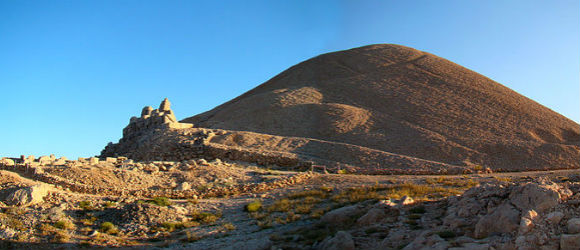Between the Taurus Mountains and the Euphrates River was the district of Commagene, the farthest northeastern part of ancient Syria. The Assyrian general, Sargon II (or Sarru-Kinu), who waged a number of wars from 722 to 705 B.C., was one of its early kings. Commagene was about the last of his triumphs; previously he had fought and defeated among others the Samarians, the Philistines, the Egyptians, the Babylonians, the people of Urartu, the Hittites, the people of Meshech, and the Minni. In more recent times its kings were affiliated with the Seleucids.
About 30 B.C. Antiochus I of Commagene decided to make a place of worship that would immortalize himself. Thus he started a temple and a necropolis on Mt. Nimrud (Nemrut Dağı, east of Adıyaman) which were embellished with mammoth statues to twenty-five kings, gods, lions, and eagles. Through the ravages of weather and earthquakes these statues have come to present a macabre scene of bodyless stone heads. For a while Commagene was a Roman province; in Byzantine times it was a center of Syrian culture.
Commagene,


Commagene, region in northern ancient Syria (modern south-central Turkey) bounded by Cilicia on the west and Cappadocia on the north. Its eastern boundary on the Euphrates River, at the conjunction of several routes over the Taurus Mountains, gave Commagene a strategic position between the Roman and Parthian empires. Commagene broke free from the decaying Seleucid Empire about 162 bc. Its king, Antiochus I (c. 69–c. 34 bc), by adroitly playing off Rome against Parthia, brought the kingdom to its zenithn a fact attested by the splendid mausoleum built by Antiochus to his own memory on the peak of Nemrud Daği.
Commagene within the Armenian Empire